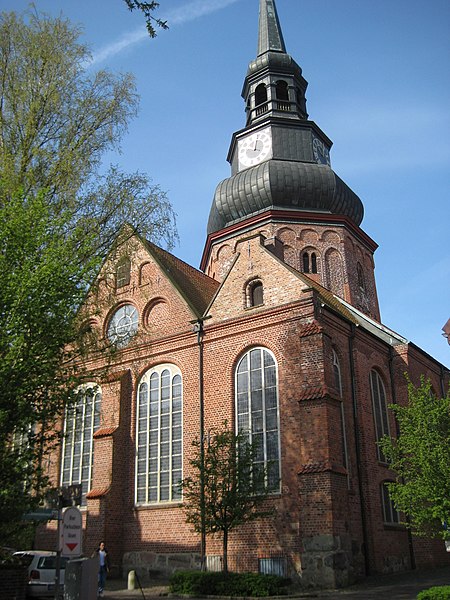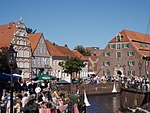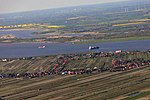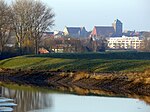Church of Saints Cosmas and Damian, Stade
Buildings and structures in Stade (district)German church stubsLower Saxony building and structure stubsLutheran churches converted from Roman CatholicismLutheran churches in Lower Saxony ... and 1 more
Stade

The Church of Saints Cosmas and Damian, Stade (German: Ss. Cosmae et Damiani or St. Cosmae) is a Lutheran church in Stade, Germany. The church was built in the early 12th century and extended in the 17th century. The Baroque altar was crafted by Christian Precht in 1674–1677, and the organ was built in 1668–1675 by Berendt Hus and his nephew, the famous Arp Schnitger; the latter expanded the organ in 1688. Vincent Lübeck served as organist of St. Cosmae between 1675 and 1702.
Excerpt from the Wikipedia article Church of Saints Cosmas and Damian, Stade (License: CC BY-SA 3.0, Authors, Images).Church of Saints Cosmas and Damian, Stade
Cosmae-Kirchhof,
Geographical coordinates (GPS) Address Nearby Places Show on map
Geographical coordinates (GPS)
| Latitude | Longitude |
|---|---|
| N 53.6018 ° | E 9.4762 ° |
Address
Cosmae-Kirchhof
21682 , Schölisch
Lower Saxony, Germany
Open on Google Maps









